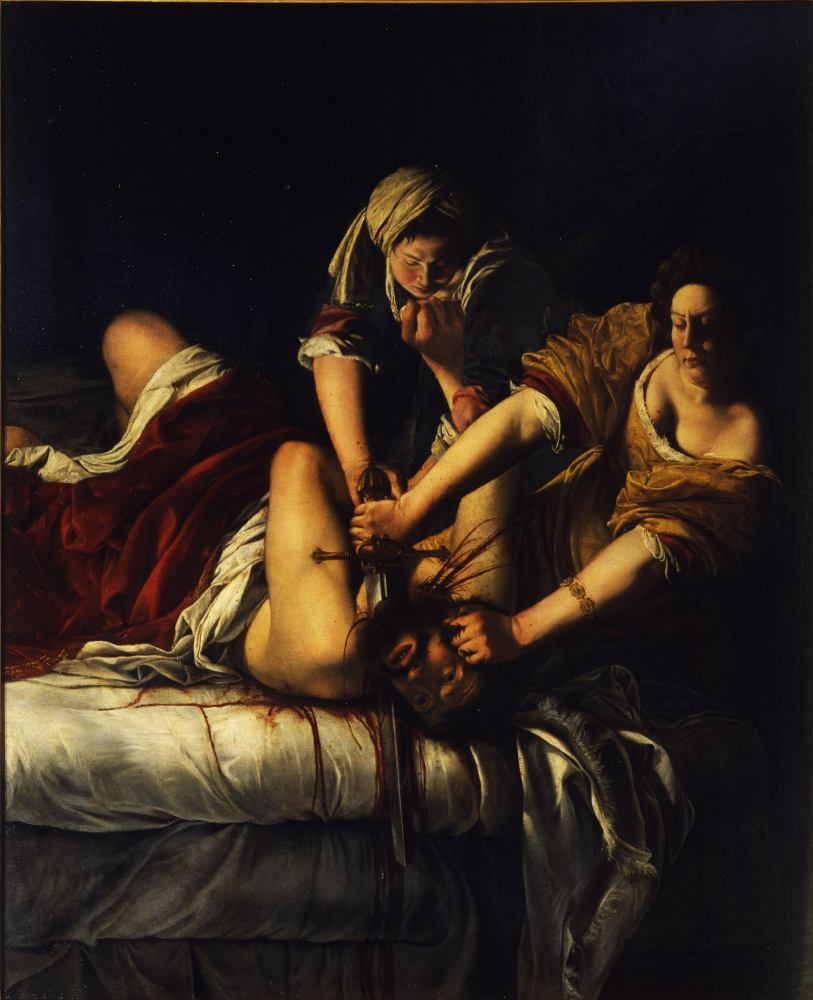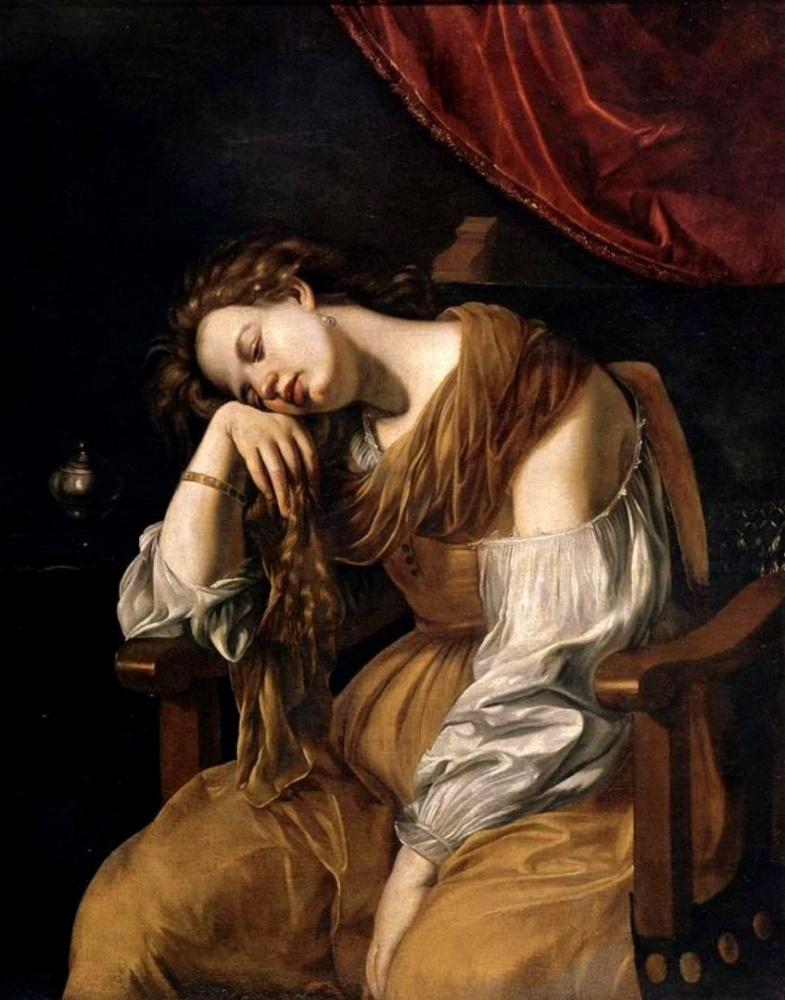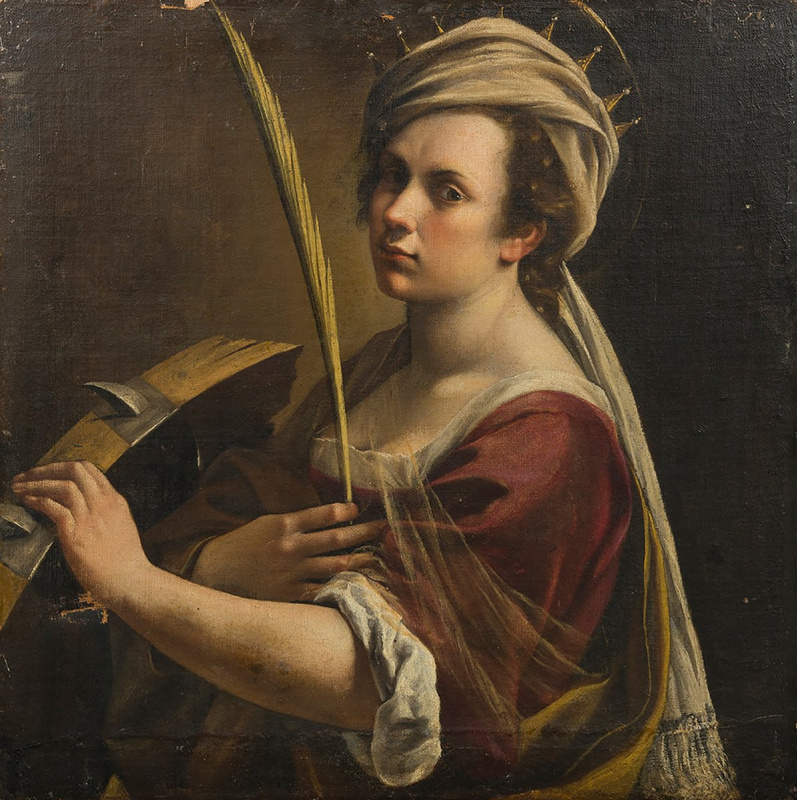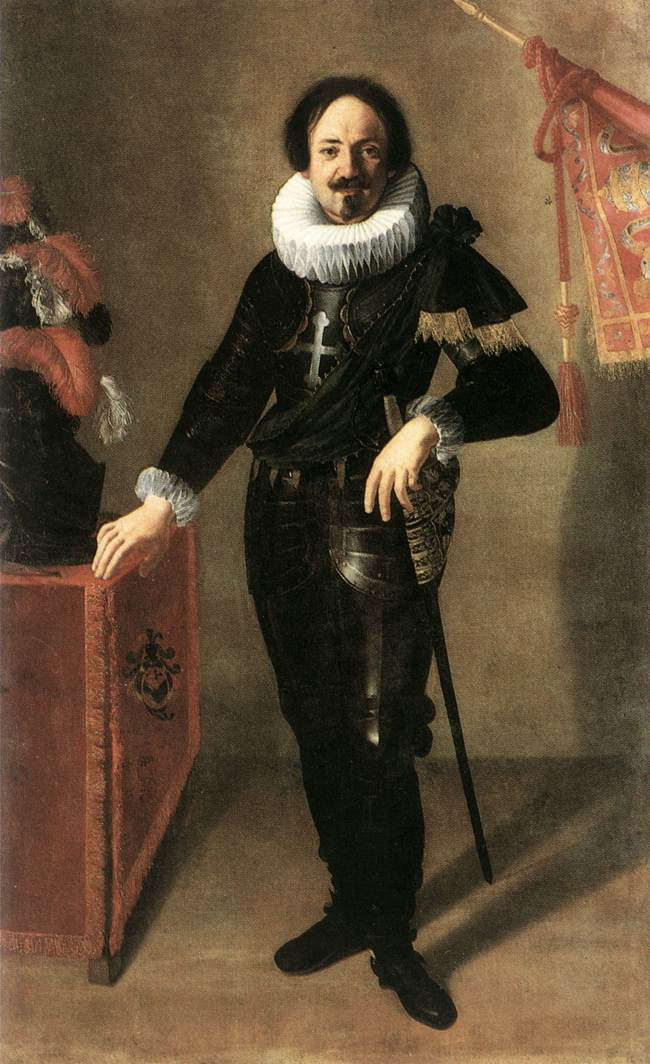Artemisia Gentileschi (1593-1652) is one of the very few female Italian Baroque painters known today. In 2018, her masterpiece "Lucretia", never before publicly exhibited, was sold for the first time in Vienna.
Who was she and why interest in Gentileschi's often violent depictions of strong female protagonists from classical mythology has risen sharply in the last years? Arthive has the answer in our TOP-10 facts about this unique artist of Baroque.
Who was she and why interest in Gentileschi's often violent depictions of strong female protagonists from classical mythology has risen sharply in the last years? Arthive has the answer in our TOP-10 facts about this unique artist of Baroque.

1. Wunderkind
Gentileschi completed several of her best-known works, including Madonna and Child (Madonna col Bambino) (1609–1610) and Susanna and the Elders (1610) before her 18th birthday.

Artemisia Gentileschi, Madonna and Child (Madonna col Bambino), 1609–10; Oil on canvas, 46 1/2 × 33 7/8 in.; Galleria Palatina, Palazzo Pitti, Florence
2. Barogue of Caravaggio
Considered the only female artist to follow the tenets of Caravaggism (after Caravaggio), Gentileschi skillfully depicted extreme contrast between light and dark in works like Judith and Holofernes. This ability to evoke drama caught the eye of wealthy patrons including King Philip II (Spain) and Charles I (England).
Юдифь, обезглавливающая Олоферна
1620, 199×162.5 см
3. Rapist to Justice
It takes a lot of courage in this day and age for women to come out and say that they've been raped, let alone follow through with pressing charges. In the 1600s, that was even more true. Artemisia Gentileschi was raped repeatedly by Agostina Tassi, an artist who worked with her father, Orazio Gentileschi. Artemisia's father had hired Tassi to teach his 18-year-old daughter how to paint perspective.
Tassi gained access to Artemisia's bedroom and trapped her in it, claiming that he wanted to marry her before raping her. Artemesia accused him of rape and then had to undergo a humiliating medical exam to "prove" that she had been a virgin prior to being assaulted by Tassi. During the seven-month-long trial, she was accused of being a whore by Tassi's multiple witnesses. However, Artemesia prevailed, and Tassi spent a little less than a year in prison. After his release, her father allowed him back in their workplace.
Сусанна и старцы
1610, 170×119 см
4. In the Stars
Gentileschi led a progressive life for a woman of her time by sustaining a career independent of male oversight. Finding a kindred spirit in the unconventional Galileo, she befriended the famed astronomer while living in Florence and maintained their relationship through letter-writing.
Gentileschi must have learned a thing or two from Galileo, since the depiction of blood squirting in “Judith Slaying Holofernes” (c. 1620) is in accordance with his discovery of the parabolic path of projectiles.
Мария Магдалина в образе Меланхолии
1621, 120×96 см
5. Advantage of Painting Live Nude Female Sitters
Because she was a women, this gave her an advantage over male painters, who were prevented from using live female nude models. And don't forget, it was at a time when women weren't supposed to pick up a paintbrush.
There were few female artists during the 1500s and 1600s. Sofonisba Anguissola and Lavinia Fontana were two of her contemporaries. However, Artemiseia Gentileschi was no doubt the most talented, and her work has stood the test of time. Prior to and throughout the late Renaissance period, almost all artists were men. These men enjoyed large commissions and wealthy patrons, and started schools to teach other men how to paint, draw, and sculpt. Society at that time viewed women as second-class humans, who were merely around to wait on men and raise children. This is what makes Artemisia so unique. She not only excelled at her craft, but she went beyond the norms for women at the time.
Лукреция
XVII век, 133×106 см
Because of the reason above and that her work fell out of the canon of being too dramatic, too cruel, too unsuitable for a "well-bred" artist, her works were not so popular.
This year the painting of Lucretia by Artemisia Gentileschi (1593-1654) will come to auction for the first time in its history at Dorotheum in Vienna on 23 October 2018. It is the first painting by Gentileschi that the Viennese auction house has handled—her work rarely comes up for sale, and the Artnet price database lists 62 auction entries, all modestly estimated. Lucretia’s cautious estimate is of €500,000-€700,000.
Lucretia was consigned from a private European collection, and is believed to have entered it in around the mid-19th century, says Mark MacDonnell of Dorotheum. A painting of Lucretia entered the collection of the Jatta family from Ruvo di Puglia in the 19th century, and the documents in the family archives refer to a painting of a belle donne nude con pugnale (beautiful nude women with daggers).
This year the painting of Lucretia by Artemisia Gentileschi (1593-1654) will come to auction for the first time in its history at Dorotheum in Vienna on 23 October 2018. It is the first painting by Gentileschi that the Viennese auction house has handled—her work rarely comes up for sale, and the Artnet price database lists 62 auction entries, all modestly estimated. Lucretia’s cautious estimate is of €500,000-€700,000.
Lucretia was consigned from a private European collection, and is believed to have entered it in around the mid-19th century, says Mark MacDonnell of Dorotheum. A painting of Lucretia entered the collection of the Jatta family from Ruvo di Puglia in the 19th century, and the documents in the family archives refer to a painting of a belle donne nude con pugnale (beautiful nude women with daggers).
6. First Woman Ever Admitted into the Accademia dell’Arte del Disegno in Florence.
The Accademia delle Arti del Disegno (or Academy of the Arts of Drawing) was a reboot of one of the first fine arts guilds in Florence, Italy. It was started by the artist Giorgio Vasari and Cosimo Medici. It accepted only the most talented artists in the area, including the legendary sculptor Michelangelo. Other members include Agnolo Bronzino and Benvenuto Cellini. The academy was a combination of an artists' guild and a court of personalities that encircled Medici. It was an esteemed place to be, and the very first woman accepted into this previously males-only academy was Artemisia Gentileschi.
Автопортрет в образе мученицы
1615, 32×25 см
7. For more than three centuries her works have regularly been attributed to other artists, all of them men
Like Sofonisba Anguissola, Gentileschi’s paintings were also attributed to men after her death, but to a much lesser extent. She still received a great amount of recognition in history, but many attributed her very early works to her father, who often worked alongside her. Artemesia carved out an unmistakable niche for herself as an artist, a feat difficult for anyone at the time, much less a woman.
Клеопатра
1610-е
, 118×181 см
8. Painted Images of Strong Women
Artemisia Gentileschi painted plenty of scenes from the Bible, a popular motif during the Late Renaissance and Baroque periods. However, the few female artists who painted in that era usually stuck to safe, gentle images, such as flattering portraits commissioned by their patrons. Not Gentileschi. She painted strong women, those who are in control in every scene. They weren't weak, pretty things painted merely as eye candy; instead, they had powerful impulses and acted upon them. This made Gentileschi very ahead of her time.
Some of Gentileschi's surviving paintings focus on a female protagonist. The story of Judith appeared a number of times in her art.
As a proof that women are still "worth" less than men, a newly discovered painting attributed to Artemisia Gentischi was auctioned off in 2014. It was estimated to go for around $300,000, but winded up selling for slightly over $1.1 million. That is a lot for one of her lesser-known works, called Mary Magdalene in Ecstasy. It is one of many paintings by Gentileschi of the Magdalene but the depiction in this particular painting is possibly a self-portrait feeling relief, possibly after winning her rape trial of 1612. The painting was virtually forgotten until recently.
However, that amount is nothing compared to one of the works by her father, Orazio, titled Danae, that sold at auction for upwards of $30 million in 2016. Thankfully, Artemisia has overshadowed her father in renown, if not in auction prices.
However, that amount is nothing compared to one of the works by her father, Orazio, titled Danae, that sold at auction for upwards of $30 million in 2016. Thankfully, Artemisia has overshadowed her father in renown, if not in auction prices.
1.1. Artemisia Gentileschi. Mary Magdalene in Ecstasy, 1623
1.2. Orazio Gentileschi. Danaë, 1623. J. Paul Getty Museum.
It was a record price for works by Gentileschi, that was broken in 2018 with the sale of her Self-Portrait as Saint Catherine of Alexandria.
In July, London’s National Gallery bought Gentileschi’s Self-portrait as Saint Catherine of Alexandria (around 1615-17) for £3.6m from the London-based dealer Robilant + Voena. The previously unknown painting had sold at Drouot in Paris last December for a record €2.3m, more than ten times the €300,000-€400,000 estimate.
1.2. Orazio Gentileschi. Danaë, 1623. J. Paul Getty Museum.
It was a record price for works by Gentileschi, that was broken in 2018 with the sale of her Self-Portrait as Saint Catherine of Alexandria.
In July, London’s National Gallery bought Gentileschi’s Self-portrait as Saint Catherine of Alexandria (around 1615-17) for £3.6m from the London-based dealer Robilant + Voena. The previously unknown painting had sold at Drouot in Paris last December for a record €2.3m, more than ten times the €300,000-€400,000 estimate.
Автопортрет в образе святой Екатерины
1615, 71×71 см
9. Important and Influential Patrons
Two of Artemisia Gentileschi's patrons were the House of Medici in Florence, Italy, and King Charles I of England. She painted upwards of 20 works for the Medici family, who were known for their discerning eye for talent. Gentileschi also traveled throughout Italy and other parts of Europe during her life, going to where her patrons were located. This was common at the time, as many artists led itinerant lifestyles where they were always on the go, looking for people who wanted to commission their works. However, most of those artists were male; it was rare for a woman to travel widely, especially unaccompanied by their spouse.
Портрет гонфалоньера
1622, 208×128 см
10. Courage to Leave her Husband
Women in Europe weren't allowed to own property in the 1600s or to have custody of their own children. So it is amazing that Artemisia Gentileschi left her husband, Peter Antonio Stiattesi, and took their child. The pair were married shortly after her rapist was sent to prison. Needless to say, the marriage did not last long.
Either way, Gentileschi left her husband behind in Florence while she traveled elsewhere in Italy in order to fulfill her work duties for her patrons and she took her daughter, Prudentia, with her. Prudentia would later become a painter herself.
Title illustration: Artemisia Gentileschi.Lucretia, detail.
Based on materials from Artnet, The Artnewspaper.


















